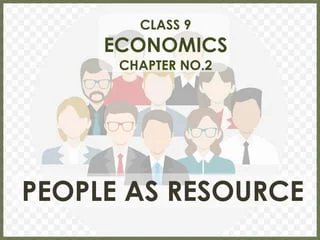Consumer's Equilibrium and Demand - Class 11
Consumer equilibrium occurs when a consumer allocates their income in a way that maximizes their satisfaction or utility. This means they are consuming the combination of goods and services that gives them the most happiness or fulfillment. Demand refers to the quantity of a good or service that consumers are willing and able to buy at a given price. The demand curve shows the relationship between price and quantity demanded. Key Concepts: Utility: The satisfaction or happiness a consumer derives from consuming a good or service. Indifference Curve: A curve showing combinations of goods and services that give a consumer the same level of satisfaction. Budget Constraint: The combination of goods and services a consumer can afford given their income and prices. Marginal Utility: The additional satisfaction a consumer gets from consuming one more unit of a good or service. Law of Diminishing Marginal Utility: As a consumer consumes more of a good or service, the additional satisfaction they derive from each additional unit decreases. Consumer Surplus: The difference between what a consumer is willing to pay for a good or service and the price they actually pay. Importance of Consumer Equilibrium and Demand: Understanding Consumer Behavior: These concepts help us understand how consumers make decisions about what to buy and how much to spend. Predicting Market Outcomes: By understanding consumer demand, we can predict how markets will respond to changes in price or income. Evaluating Economic Policies: Consumer equilibrium and demand analysis can be used to evaluate the effects of government policies on consumers and markets. In Class 11, students will learn the basic concepts of consumer equilibrium and demand. They will study utility functions, indifference curves, budget constraints, and the law of diminishing marginal utility. This knowledge will be essential for understanding how consumers make choices and how markets function. ভোক্তাদের ভারসাম্য তখন ঘটে যখন একজন ভোক্তা তাদের আয় এমনভাবে বরাদ্দ করেন যা তাদের সন্তুষ্টি বা উপযোগিতা সর্বাধিক করে। এর অর্থ তারা পণ্য ও পরিষেবার সংমিশ্রণ গ্রহণ করছে যা তাদের সবচেয়ে বেশি সুখ বা পরিপূর্ণতা দেয়। চাহিদা বলতে একটি পণ্য বা পরিষেবার পরিমাণকে বোঝায় যা ভোক্তারা একটি নির্দিষ্ট দামে কিনতে ইচ্ছুক এবং সক্ষম। চাহিদার বক্ররেখা দাম এবং চাহিদার পরিমাণের মধ্যে সম্পর্ক দেখায়। মূল ধারণাগুলিঃ উপযোগিতা (ইউটিলিটি): কোনও পণ্য বা পরিষেবা গ্রহণের মাধ্যমে গ্রাহকের সন্তুষ্টি বা সুখ অর্জিত হয়। উদাসীনতা বক্ররেখাঃ এমন একটি বক্ররেখা যা পণ্য ও পরিষেবার সংমিশ্রণ দেখায় যা একজন গ্রাহককে একই স্তরের সন্তুষ্টি দেয়। বাজেটের সীমাবদ্ধতা-একজন ভোক্তার আয় ও মূল্যের পরিপ্রেক্ষিতে পণ্য ও পরিষেবার সংমিশ্রণ। প্রান্তিক উপযোগিতা (মার্জিনাল ইউটিলিটি): কোনও পণ্য বা পরিষেবার আরও একটি ইউনিট গ্রহণের ফলে একজন ভোক্তা অতিরিক্ত সন্তুষ্টি পান। প্রান্তিক উপযোগিতা হ্রাস করার আইনঃ একজন ভোক্তা যখন কোনও পণ্য বা পরিষেবার বেশি ব্যবহার করেন, তখন প্রতিটি অতিরিক্ত ইউনিট থেকে প্রাপ্ত অতিরিক্ত সন্তুষ্টি হ্রাস পায়। ভোক্তা উদ্বৃত্তঃ একজন ভোক্তা কোনও পণ্য বা পরিষেবার জন্য যা দিতে ইচ্ছুক এবং প্রকৃত মূল্যের মধ্যে পার্থক্য। ভোক্তা ভারসাম্য ও চাহিদার গুরুত্বঃ ভোক্তাদের আচরণ বোঝাঃ এই ধারণাগুলি আমাদের বুঝতে সাহায্য করে যে গ্রাহকরা কীভাবে কী কিনবেন এবং কতটা ব্যয় করবেন সে সম্পর্কে সিদ্ধান্ত নেন। বাজারের ফলাফলের পূর্বাভাসঃ ভোক্তাদের চাহিদা বোঝার মাধ্যমে আমরা ভবিষ্যদ্বাণী করতে পারি যে, মূল্য বা আয়ের পরিবর্তনে বাজার কীভাবে সাড়া দেবে। অর্থনৈতিক নীতির মূল্যায়নঃ ভোক্তা ও বাজারের উপর সরকারি নীতির প্রভাব মূল্যায়নের জন্য ভোক্তা ভারসাম্য ও চাহিদা বিশ্লেষণ ব্যবহার করা যেতে পারে। একাদশ শ্রেণিতে শিক্ষার্থীরা ভোক্তা ভারসাম্য এবং চাহিদার মৌলিক ধারণাগুলি শিখবে। তারা ইউটিলিটি ফাংশন, উদাসীনতা বক্ররেখা, বাজেটের সীমাবদ্ধতা এবং হ্রাসমান প্রান্তিক উপযোগের আইন অধ্যয়ন করবে। ভোক্তারা কীভাবে পছন্দ করেন এবং বাজার কীভাবে কাজ করে তা বোঝার জন্য এই জ্ঞান অপরিহার্য হবে।
English
Last updated
Tue, 01-Oct-2024



















